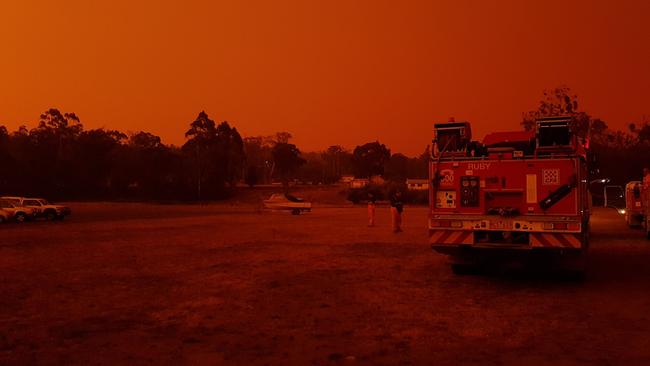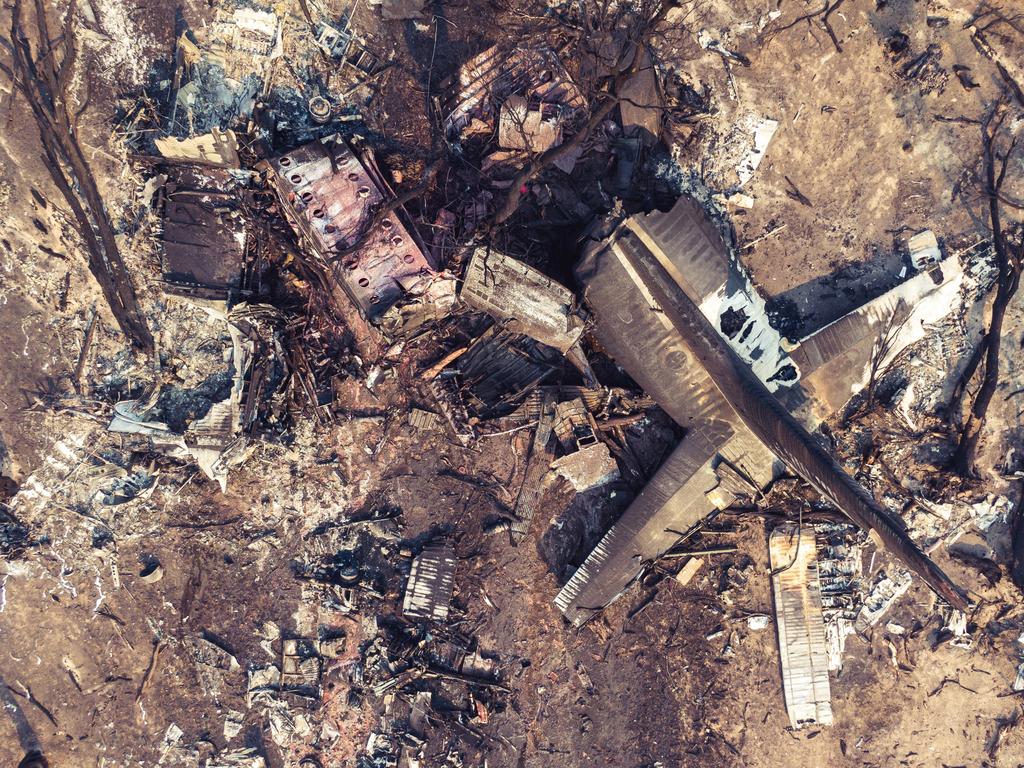Volunteer firefighters showed courage to burn
Our Australian(s) of the Year for 2019? It’s no contest, really.

The fires started in September last year in Queensland, burning through usually wet, subtropical forest to raze the historic Binna Burra resort in the Gold Coast hinterland. At the midpoint of this summer of sorrow, vast tracts of the continent lay blackened.
Never has the thin line of volunteer firefighters — collectively, this newspaper’s Australian of the Year — been stretched so acutely, for such an exhausting period.
The crisis has tapped all points of the compass, from the northernmost plains of Cape York Peninsula to Tasmania’s Derwent Valley; west to the spiky Pilbara scrubland, lapped by the warm Indian Ocean; east to Gippsland in Victoria and the holiday playground of the NSW south coast.
Hard-pressed fireys say this bushfire season is like no other, unprecedented in its scope and the number of communities affected. Nine of their number have been killed in the line of duty, three of them volunteers from the US who died on Thursday when their C-130 water bomber crashed in the NSW Snowy Mountains.
Hundreds more have been injured; thousands remain deployed on the firelines, far from home, red-eyed in the enervating heat, giving their all to protect the lives and homes of fellow Australians.
They go where they are needed. Having been called out every second day to deal with local outbreaks, Tony Lankester, the first officer of the Weipa-based Cape Rural Fire Brigade in far north Queensland was deployed to Nowra in southeast NSW. The size and intensity of the fires there stunned him.
He is used to dealing with grass and small woodland blazes that snake across the dry northern landscape like an angry king brown, not the all-consuming forest fires of southern Australia. “But we’re all firefighters, there to do the job,” says Lankester, 56.
“When people are running from a fire, we’re the ones running towards it. The majority of us are volunteers and, like just about everything else in this country, things would fall over without the volunteers.”
Peter Felmingham of the Lachlan Fire Brigade, a part-time unit that guards the approaches to Hobart from the inland side of Mount Wellington, has crisscrossed the Derwent Valley to keep on top of an intensely volatile bushfire situation.
He is all too aware, as are the firefighters of Victoria and South Australia, that the drama so far may be only a foretaste of what’s to come as the season wears on. “Every day, you are sort of on edge … you just know that one little bushfire can turn into a big, dangerous one very easily,” the 61-year-old says.
The stories of the volunteers, their bloodcurdling escapes, the balming bond of comradeship, their fears, regrets, the laughter they share with one another and the ever-present danger they confront, are as rich and diverse as the 150,000-plus men and women who belong to the nation’s rural and bush fire brigades.
Today we meet some of these extraordinary Australians — people such as Todd Russell, 47, the former Beaconsfield goldminer who became a household name in 2006 when he was trapped underground for 14 days with workmate Brant Webb, and who now leads the volunteer fire brigade in his hometown in northern Tasmania.
“For me, it’s an opportunity to give back to someone who is in need, just as I was in 2006,” he says of his 26 years as a volunteer firey. Russell and his strike team were deployed to Braidwood, east of Canberra, at the height of the emergency in southern NSW.
Darren Nation, the captain of the Sydney-based Horsley Park RFS brigade that lost two men last month, says the heart-pounding experience of standing your ground in the face of an advancing firefront is hard to convey.
How do they do it? “No 1, you are trained to do it,” he explains. “We are trained to deal with it. Once the adrenalin kicks in, you don’t feel the heat, and once it’s past, that’s when everything else happens — the exhaustion, the relief. I can sit at home on a hot day, and it’s 30C, and really feel it. But you can be on the fire truck and it’s 45C and you don’t feel a thing until you stop.”
Emma Gardner, 37, of the Lenah Valley Fire Brigade in Tasmania, was traumatised when she survived a burnover, huddled beneath fire blankets with other crew members as flames engulfed their truck. “I had nightmares … random dreams about fire,” she says. But she was back on the fireline the next day, doing her job “because someone has to do it”.
Manish Raju, 37, was deployed from his home in Jabiru in the Northern Territory’s famed Kakadu National Park to save a Queensland town he had never heard of: Boonah, southwest of Brisbane. The flames were so powerful, he thought they reached all the way to the sky. “I can tell you … I’ve never seen a fire like that,” he says.
Kit Mizi-Wong remains determined to fulfil her obligations to South Australia’s Country Fire Service even though she is seven months’ pregnant. If her husband, a fellow volunteer, could do his bit fighting the lethal blaze that erupted at Cudlee Creek near their home of Hahndorf in the Adelaide Hills, killing one person and destroying 85 homes, then she can do her job as a CFS operations manager. “After the baby, next fire season, I hope I am ready to go back,” she says.







To join the conversation, please log in. Don't have an account? Register
Join the conversation, you are commenting as Logout